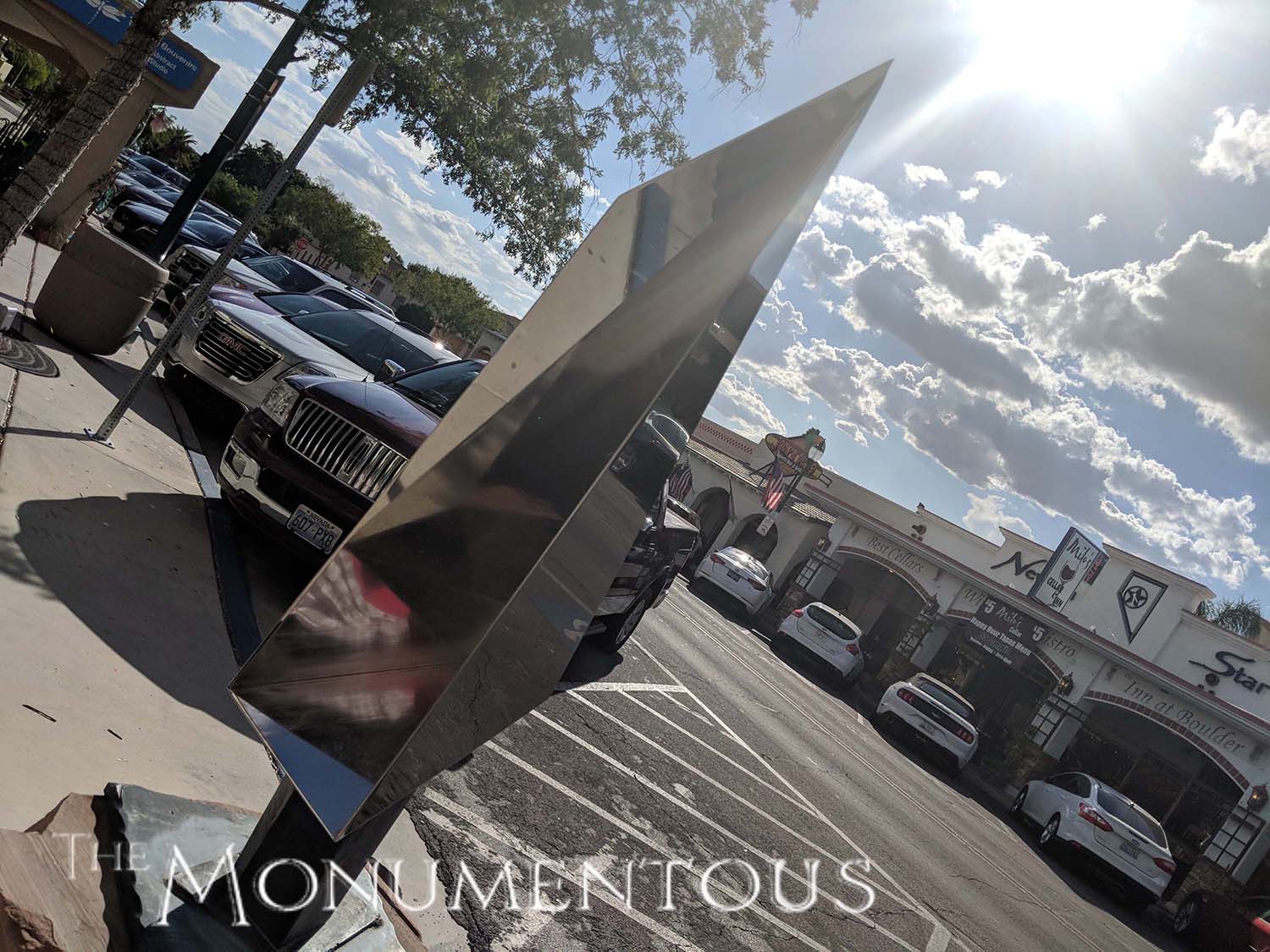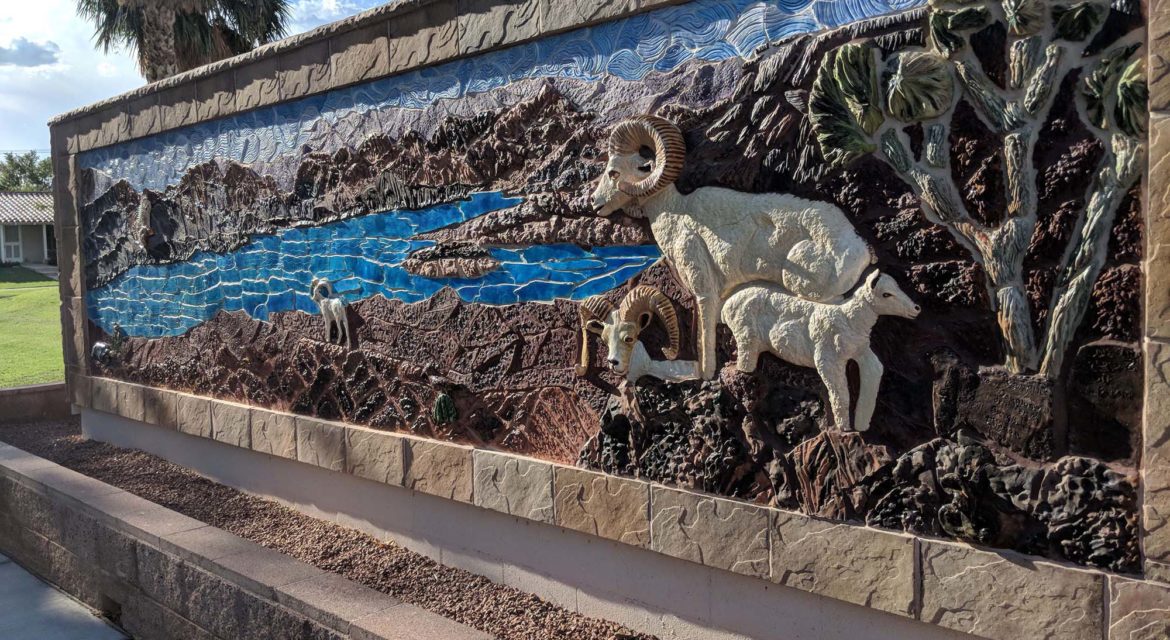
“The town that built Hoover Dam,” is a place that celebrates the history of the area while also highlighting the community and culture that has developed between the glitz of Las Vegas and the beauty of the Lake Mead Recreation Area. Boulder City, Nevada has come to exemplify the kind of charm and appeal that towns can enable, and nowhere is that more apparent than on the Boulder City Mural and Sculpture Walking Tour.

A Collection of Sculptures and Murals
The variety of sculptures and murals that are along the Boulder City Mural and Sculpture Walk is impressive in terms of both scope and scale, with a map that calls out over fifty pieces and locations. The Walking Tour takes visitors directly into and through the Boulder City Historic District, which they can experience by utilizing numerous paths or from an audio walking tour that will take participants to 11 sites within Boulder City’s historic district. This history can be seen and experienced along the Mural and Sculpture Walk itself, with pieces located in every corner of the downtown area.

Pieces like “Rag Town Goddess” highlight the history of Boulder City itself by representing the early pioneers who came to work on the dam and dealt with the harsh heat of the summer and unbearable cold of the winters. “Afternoon Breeze” depicts a woman who represents the type of people that shaped the community during this critical time for everyone who had come to the area. “Alabam” represents one of the muckers who ensured that the more mundane tasks associated with the construction of the dam were carried out.
Other pieces are far more whimsical in nature. “Eggcited” depicts a Humpty Dumpty-like character sitting atop a pile of books, while “Peter Pan” has the character staring up and into the sky as a tiny Tinkerbell stares up and onto him in the same manner. “Clorese” is a bronze fish with a glowing smile while “Which Came First?” visualizes the popular expression.

These pieces take on abstract and figurative forms and run to the extremes for both. Pieces like “Puddler’s Break” depict and represent two of the people whose job it was to make sure there were no air bubbles or debris in the concrete of the Hoover Dam as it formed, and are the definition of a figurative sculpture. Meanwhile, “The Diver” is an abstract piece that can be interpreted in various ways. Similarly, interpretations of the dog catching a ball in the “Play Ball” sculpture are rather limited, while viewers will likely have their own opinions about what “Concentricity” depicts and means.
Numerous murals are also featured along the Mural and Sculpture Walk, and they feature a similar variety in subjects and forms. Some of the murals like the “Welcome to Boulder City” mural are reminiscent of other city’s attempts to cultivate a sense of comfort for both residents and tourists with murals, but other pieces like “Lake Mead” are entirely unique. Detailed info and insight about each of these murals is readily available.
All of these pieces are readily accessible throughout the downtown area, and that access has contributed to how visitors interact with the city itself.

Engagement and Interactions
 Some Walking Tours have created pieces that are designed to literally blend into the surrounding cityscape to encourage audience interactions. The Boulder City Mural and Sculpture Walk takes this concept to another level with murals and sculptures that can be difficult to spot due to how well they fit in with their surroundings. Doing so compels viewers to take in the surrounding community and businesses in a way they wouldn’t otherwise.
Some Walking Tours have created pieces that are designed to literally blend into the surrounding cityscape to encourage audience interactions. The Boulder City Mural and Sculpture Walk takes this concept to another level with murals and sculptures that can be difficult to spot due to how well they fit in with their surroundings. Doing so compels viewers to take in the surrounding community and businesses in a way they wouldn’t otherwise.
The variety of sculptures and murals that are located nearby or even alongside businesses has enabled them to engage with visitors in direct ways. Some shops even have items for sale that look as if they themselves could be part of the Mural and Sculpture Walk. All of this has helped create powerful opportunities for engagement with these establishments and helped drive audiences to the shops and stores that are located throughout the city.
 With so many pieces scattered in such a small area, viewers are constantly on the lookout for the next piece, and that brings them into contact with other items and pieces of history that are not associated with the Mural and Sculpture Walk that would otherwise go unnoticed. That can mean anything from learning about the Historic Boulder Theater to discovering when an upcoming local event is taking place to reading about the rich and famous guests the Boulder Dam Hotel hosted in the 1930s and 40s.
With so many pieces scattered in such a small area, viewers are constantly on the lookout for the next piece, and that brings them into contact with other items and pieces of history that are not associated with the Mural and Sculpture Walk that would otherwise go unnoticed. That can mean anything from learning about the Historic Boulder Theater to discovering when an upcoming local event is taking place to reading about the rich and famous guests the Boulder Dam Hotel hosted in the 1930s and 40s.
History walks, adventure tours, retail tours and more are accessible throughout the city, and the Boulder City Mural and Sculpture Walk has created a direct means for people to engage with all of these activities. Doing so is only part of the legacy it has come to represent for the community as a whole though.

Shaping the Culture and Economy of Boulder City
 Boulder City is one of only two cities in Nevada that prohibits gambling, but the history of the city is what really makes it distinct. While that history begins with the construction of the Hoover Dam, it certainly doesn’t end there, and the community that began and grew as a result of this construction continues to evolve and flourish.
Boulder City is one of only two cities in Nevada that prohibits gambling, but the history of the city is what really makes it distinct. While that history begins with the construction of the Hoover Dam, it certainly doesn’t end there, and the community that began and grew as a result of this construction continues to evolve and flourish.
All of it is showcased directly and indirectly throughout the Boulder City Mural and Sculpture Walking Tour in murals, figurative sculptures and functional pieces. These representations are a testament to the power these kinds of monuments can create for a city and region. Doing so has enabled a legacy that residents and visitors can experience in ways that continue to influence the culture and economy of the area.

